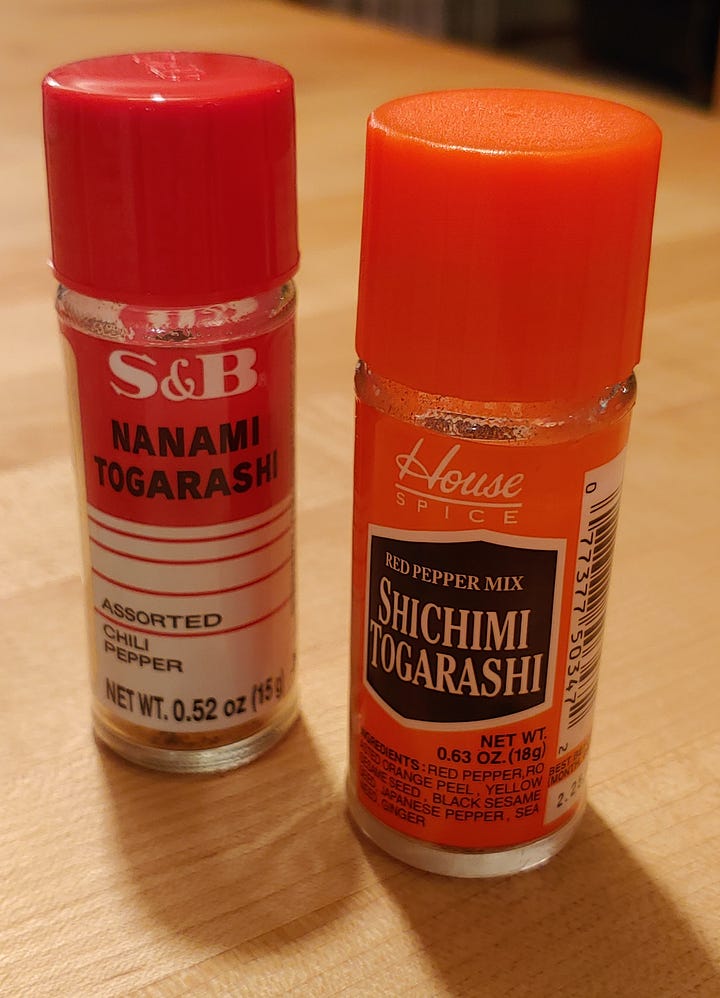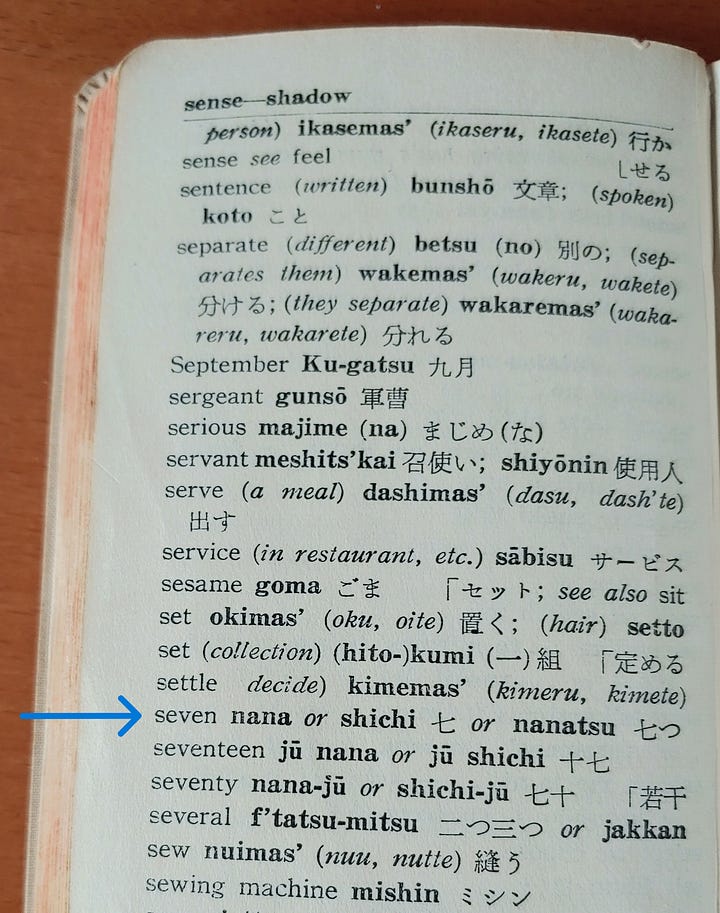No. 16: Here Come the Holidays
Seafood on the menu, scallops from Maine and shrimp with shichimi togarashi
My favorite meal of the year is mere days away. I got a bit into my love of Thanksgiving in this issue from last year (which also includes a recipe to consider for holiday snack spreads: Smoked Oyster Dip, or “Fill in the Blank” Dip, given its versatility).
I feel in a similar boat this year as I did last, not as much time as I might like for lots of cooking. It’s great to have guests contributing to the meal, not only to help round out the menu but also because it emphasizes the primary goal of the day: the community aspect of coming together, sharing food together. By no means does that have to require everyone to cook something. Just as valuable are the contributions of a favorite festive beverage, wonderful cheese, pie from a favorite bakery, some slightly-fancier-than-usual crackers and snacks. And you know what? I will also happily dip a Frito into a bowl of Lipton onion dip, or spread a little port wine cheese on a Triscuit. There’s room for timeless comfort foods in the mix.
On Thursday duck will be going on my Weber rotisserie, with some salmon grilled as well. Tinned seafoods, shrimp cocktail, surely something else seafoody (maybe a clam dip?) will be on the wood-block counter where we hang out and visit and nibble for a couple of hours before sitting down to dinner.
For those of you cooking up—or contributing to—a Thanksgiving feast, is seafood going to be on the menu? If so, I’d love to hear what’s planned, in the comment section below.

Outstanding Scallops from Maine
Though it may be a bit late to provide inspiration for Thursday, this above is one of the courses from our Thanksgiving menu last year (ideal for any celebratory meal coming up, of course). It was inspired by some gorgeous day-boat Maine scallops Downeast Day Boat sent me to try. I had met Togue Brawn, the company’s founder, at a conference in Alaska last fall. Her enthusiasm for Maine scallops is quite infectious, which comes through in this piece in Eater from last year. Of course I was happy to give those scallops a try.
Of the few ways I cooked the scallops, this prep from Thanksgiving stood out. I didn’t follow a recipe, it came together on the fly that day. The base was a purée of celery root with just enough butter and cream for smooth texture, not overly rich. Leeks were sautéed in a bit of butter until tender but not brown. I reduced some of the shellfish stock I usually have handy in the freezer (sadly I need to re-stock) and embellished with some butter (yes, I do like butter) for the sauce. A light parsley oil accented the sauce. The final flourish was a pinch of gremolata—lemon zest, parsley, a touch of garlic—on top.
The scallops themselves? Nothing more than a very hot cast-iron skillet, a thin drizzle of oil and a minute or so on each side.
Elegant and not too-too elaborate, though the seared scallops with just a couple of the embellishments would have been delicious too. I’ll try to recreate this in recipe form one of these days, working from notes I scribbled last year. I realize a rough description may only get you so far. But hopefully this offers at least an idea or two about some ingredients and elements to play around with.
These were frozen scallops that I’d been sent, outstanding quality, they had a lush, rich, slightly sweet flavor. The difference between 'average' sea scallops and top-quality scallops like these is striking. Worth seeking out. I see on their website that they’ll have fresh Maine day-boat scallops available in a couple of weeks. I’m putting it on my calendar to order some, can’t wait.
Getting into Sustainability
It’s long overdue, me addressing the huge, complex, ever-evolving, vitally important topic of sustainability relative to the world of seafood. Though I’ve done a decent amount of learning, reading, resource-collecting and such over the years, I definitely have frequent moments of feeling overwhelmed when contemplating the topic. I very much sympathize with home cooks who are trying to navigate their shopping options to make the best choices. I’m working to identify a number of smaller-bite themes to start writing about in the coming months…to temper my own overwhelmedness.
For starters, I thought I’d drop this quick poll here, drawing from one of the questions I had on a shopping survey I put together last year (which some of you may have filled out, thanks to those who did). The poll has limited word count, so I had to edit down the descriptors. Full version of “quite”: when I have a choice, I'll opt for the more sustainable selection; and for “somewhat”: it's great when what I want to buy is sustainable but it's not the deciding factor. No judgment! Pure journalistic curiosity and perspective for me to consider going forward.
Favorite Things: Shichimi Togarashi
The quick-to-make recipe below is something to keep in mind for upcoming holiday snack spreads, or game nights, or random aperitif hour fare. Though when I say “quick” I fail to consider that not everyone has a jar of shichimi togarashi on their spice shelf. (Unlike the bag of frozen shrimp you are more likely to have on hand, which helps make this an impromptu option.) If you don’t now, I hope you’ll procure yourself a jar of the spice blend before long. I reach for it quite a lot and have a feeling you might too once it’s handy.


One of my longtime favorite spice blends, shichimi togarashi is a Japanese blend based on chile* pepper. Typically it’ll be seven elements, shichi is one form of ‘seven’ in Japanese. Another translation of ‘seven’ is nana, and you might see a very similar spice blend by the name of nanami togarashi as well. I have a bottle of each and they list the same ingredients in almost the same order, with ginger and seaweed swapped at the end of the lists. Chile pepper, dried orange peel, black and white sesame seeds and Japanese pepper (sansho) round out those ingredient lists. Other brands can vary in ingredients, but I think generally still seven total. Note that ichimi togarashi is just hot chile pepper (‘ichi’ = ‘one’)—much bolder in flavor, not an equal substitute for the other two.
In addition to the recipe below from Salty Snacks, I had a recipe in Oysters featuring togarashi in a crisp slaw served with panko-coated fried oysters on slider buns. I love shichimi/nanami togarashi sprinkled over a piece of fish before grilling or baking, or stirred into a stir-fry. It adds a quick boost of flavor to sautéed vegetables, and makes for great popcorn seasoning as well. I haven’t tried this yet, but just occurred to me that togarashi-seasoned breadcrumbs scattered over oysters before baking would surely be delicious, I can’t wait to try that. Look for togarashi in the spice section or with other Asian ingredients at the store, or at specialty spice markets. If you haven’t tried it before, I’ll be curious to hear what you think.
*I’m sticking with my style preference of ‘chile’ for hot pepper, saving ‘chili’ for the stew-like dish and the seasoning mix used for it
Crisp Shrimp with Shichimi Togarashi
Ideal for a cocktail party or aperitif hour before dinner, this would also be great on game night: the bite-size pieces can easily be eaten with fun little cocktail picks, keeping hands clean for important game play (I skip all the flatware on game night). Since the shrimp are halved lengthwise before frying, the pieces curl up a bit as they cook, adding a bit of fun visual appeal.
1 teaspoon shichimi togarashi
1 teaspoon kosher salt
1 pound large (16/20) shrimp, peeled
1/3 to 1/2 cup white rice flour or all-purpose flour
Vegetable oil, for frying
Stir together the shichimi togarashi and salt in a small bowl.
If the shrimp are not already deveined, use a small sharp knife to slit each shrimp along its back, removing any dark vein. Slice each shrimp in half through that slit where the vein was, halving each completely.
Put the shrimp in a medium bowl and sprinkle half of the seasoned salt over, tossing to mix. Toss in enough flour to lightly and evenly coat the shrimp.
Pour about 1 1/2 inches of oil in a heavy medium saucepan and warm over medium-high heat to 375 F (lower the heat if needed to maintain the temperature). Carefully add 8 to 10 pieces of shrimp to the oil at a time, cooking until lightly browned, about 2 minutes, stirring very gently a few times to ensure even cooking. Lift them out with a slotted spoon to a wire rack or paper towels to drain. Continue cooking the shrimp in batches, allowing the oil to reheat between batches as needed.
Transfer the crisp shrimp to a serving plate or bowl, sprinkle the remaining seasoned salt over, and serve. They’ll be best enjoyed shortly after cooking.
Makes 4 to 6 servings





